|
Getting your Trinity Audio player ready...
|
Reading Time 8 mins
“Don’t push me ‘cause I’m close to the edge. I’m tryin’ not to lose my head.” Grand Master Flash and the Furious Five, 1982
“Until the philosophy
Which hold one race superior and another
Inferior
Is finally
And permanently
Discredited
And abandoned
Everywhere is war
Me say war”
Robert Nesta Marley, 1976
It feels like the earth is wobbling precariously on its axis like an old merry-go-round spinning wildly, trying mightily to fly off its warped tracks each time it passes the blaring music. The ride speeds up, and you are in full terror. It slows down almost imperceptibly, and you exhale, exulting in the silence and peace you feel. Your eyes widen and your heart again thuds against your ribcage when you become aware of both the gradually increasing noise and speed—even faster than before. Can’t get off. Too dangerous, so you shelter in place.
This is our hot spot in Brooklyn. Our merry-go-round of the mind rushes us through the sounds and the realities of Covid-19, cops, the New York State Policies Assure Uniform Safety for Everyone (PAUSE), New York City State of Emergency, shuttered schools, and at one point, Brooklyn’s designation as the deadliest county in the nation.
This deluge of historic changes to our daily lives caused people to become more observant, reflective, and conscious of the irrelevance of the human-made measurement of time. Our priorities shifted, and we initiated tasks and activities that weren’t even on our bucket lists. The freedom to roam was squelched for some and intensified for others. Online videos of purported experts either frightened or comforted us. Our nerves were so overworked that we either started not caring or caring too much.
The two trailers of death that the hospital used a block away stood quietly, dollies carrying black body bags rolled silently up the wooden ramp and came down empty. Used blue gloves and dirty masks dotted our street. Worried, embarrassed masked strangers stood appropriately distanced on a long line snaking out of a temporary medical tent adjacent to the Emergency Room entrance.



At 7 pm each evening, people take a break from themselves. They acknowledge essential workers with noise from spoons tinkling against bottles, ringing cowbells, congas, bongos, trumpets, alto saxophones, and banging pots and pans. We nod to exhausted scrub-clad workers walking on the block. For the first time, some neighbors noticed and acknowledged people who have been living next door for several years. Not rushing anywhere enabled neighbors to have brief, masked conversations with each other while fastidiously adhering to the six-foot distance rule.
With alternate side of the street parking rules suspended for months, Brooklyn felt like Small Town, USA, and actually resulted in people using their cars more often during the day because more parking spaces were available. The dark windows of brownstones throughout the neighborhood indicated that those could escaped to country houses or to their faraway hometowns to avoid the pressures of sheltering in place in their adopted community. They took their fancy cars with them, adding to the welcomed decreased vehicle density on the block for those who chose to (had to) ride it out in Brooklyn.
Into this environment came a video of an indifferent white police officer in Minneapolis kneeling on the neck of an African-American man who is yelling with his last breaths the same words shouted by Eric Garner six years earlier, “I can’t breathe!”
George Floyd was murdered in plain sight by Derek Chauvin.
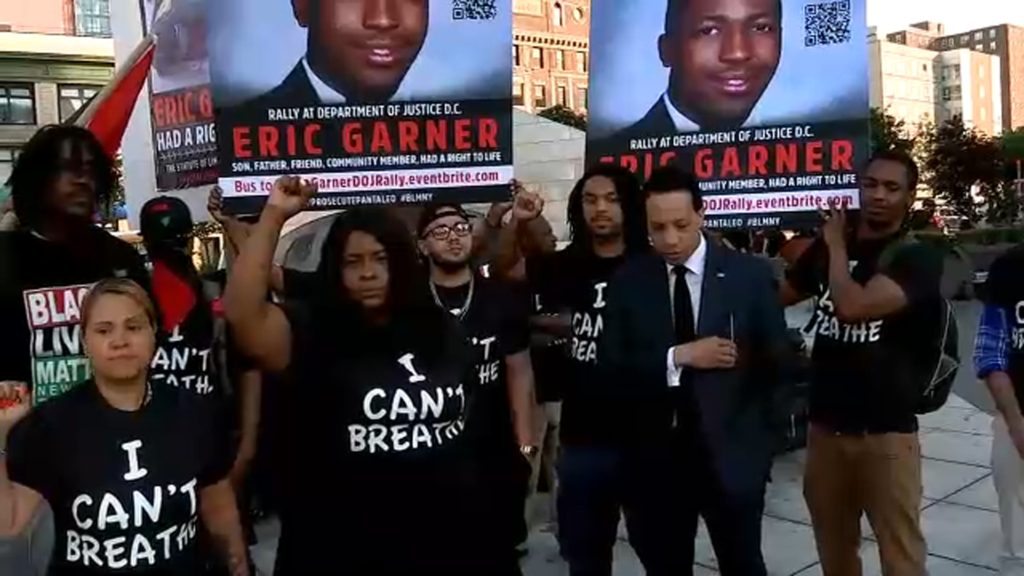
Why did this killing hurt more than the others? Cops kill almost 1,000 people in the United States every year. Four hundred twenty-nine civilians, 88 black, have been killed since January as of this writing. Fortunately, we know some of their names, but sadly there are thousands more that we rarely or never say.
Michael Brown, Ezell Ford, Breonna Taylor, Akai Gurley, Tamir Rice, Sandra Bland, Clifford Glover, Amadou Diallo, Anthony Baez.
Was it witnessing the actual live murder of another human being? The cavalier attitude of the police officer nudging George Floyd to determine if he was completely dead? Was it caused by our heightened awareness of the value and fragility of life? Was it the fact that African Americans are dying of Covid three times the rate of Caucasians? That 80% of social distancing summons issued in NYC were given to African-Americans and Latinos? Probably a combination of all of the above.
In any case, the video stabbed a raw nerve, people demanded to be heard, and they hit the streets the day right after the death of George Floyd. Forty countries from every continent except Antarctica were in the streets. Nine hundred seventy protests in 400 cities and all fifty states had demonstrations.
After almost eighty days of sheltering in, dashing back inside, and viewing the outside as dangerous and forbidden, the prospect of expressing themselves in the street seemed like heaven. Escaping from Zoom meetings, telephone calls, and emails to share compelling experiences with like-minded, committed people, was too enticing to let pass. Plus, the fight was a righteous one: end the attack on black and brown people and convict and incarcerate guilty law enforcement officers.
Many non-essential workers had the luxury of creating their work schedule, college students were finished with classes, and many others lost their jobs. A perfect storm, especially for first-time protesters, to focus entirely on activism
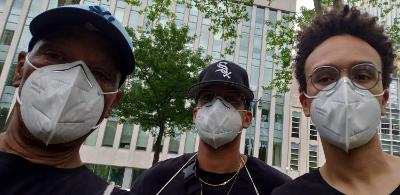
My two sons and I hit the streets. No novices here. They walked the streets of New York City to protest the police murders of Sean Bell and Eric Garner at the hands of the New York Police Department. I started my life of protesting at the age of 10 on a picket line with my parents seeking to secure equal opportunities for black construction firms. On this particular day in Brooklyn in June 2020, the most significant apprehension came not from the specter of police violence but Covid-19. We departed from our usual modus operandi of past demonstrations and did not dive into the crowd yelling and marching shoulder-to-shoulder with others. Faces covered, we stood on the outskirts of the protest and were hyper-vigilant about keeping ourselves safely distanced from others.
There was less shouting to reduce the expulsion of droplets into the air. Without speaking yet right on cue, we all clapped our hands rhythmically to “Black Lives Matter,” raised both arms in the air, took a knee, and voicelessly threw our fists in the air.
Who were these people marching and rallying with us? There were a few vets of the long-time battle, like me, but primarily it was people in their 20s and 30s like my sons. Your usual protest attendees were there selling the Socialist Workers’ Party newspaper, distributing leaflets about future events, and asking for donations for various worthy causes. Unlike past demonstrations demanding police accountability, this one had a majority of Caucasians in the ranks. I never saw so many white people carrying BLACK LIVES MATTER placards or chanting “NO JUSTICE TO PEACE, NO RACIST POLICE!” and “DEFUND THE POLICE!” The last phrase was a new and powerful concept to call for at a street protest.
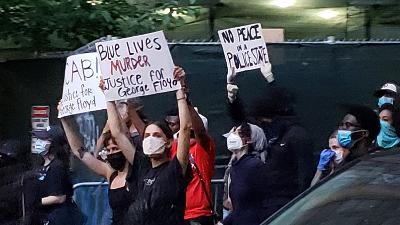
Allies are welcome. I’m here because I have seen this scene play out all of my life: black or brown person gets killed by the police. We mourn. We get angry. We march. The victim gets buried. The killer walks. The incident is commemorated each anniversary of the murder. Most of us want this to stop, but it doesn’t. Maybe THIS killing is the one that changes the dynamic. But we say the very same this at this point in the process every single time. However, the broad coalition of support for real change feels authentic this time and more possible than ever. “#Black Lives Matter” was viewed as radical and militant when first started by Alicia Garza, Opal Tometi, and Patrice Cullors in 2013. Today, while still upsetting to some factions, the importance of the phrase and its concise meaning is grudgingly acknowledged as a force that is not only not going away but growing in influence and power.
Now is the time to strategically re-issue demands that strike political, social, and economic blows to white supremacy and its too often complicit and unprofessional police members. Right at this moment, the will is there. Most people do have a conscience and desire peace and equality for all. White folks are beginning to understand or to understand at a deeper level and to witness via the videos of police abuse and white people flaunting their entitlement by frivolously calling the cops on black people, hunting down and shooting an unarmed black jogger, or detaining a black FedEx driver for delivering a package within their gated community that the system is broken for people of color.
The enthusiasm, passion, and desire for change are present in the hearts and minds of the street protestors, supporters on the sidelines, and those watching at home. On two consecutive nights, hundreds of demonstrators marched literally at our Brooklyn doorstep. My upraised arm and tightly clenched fist in the Black Power salute was returned and acknowledged by the marchers who glanced in my direction. The jumbled chants and shouts of the assembled sounded like an oncoming freight train roaring onto and off of my block. The decibel level of this living force was significantly enhanced by the obligatory thundering helicopters and wailing police sirens following and surveilling the marchers.
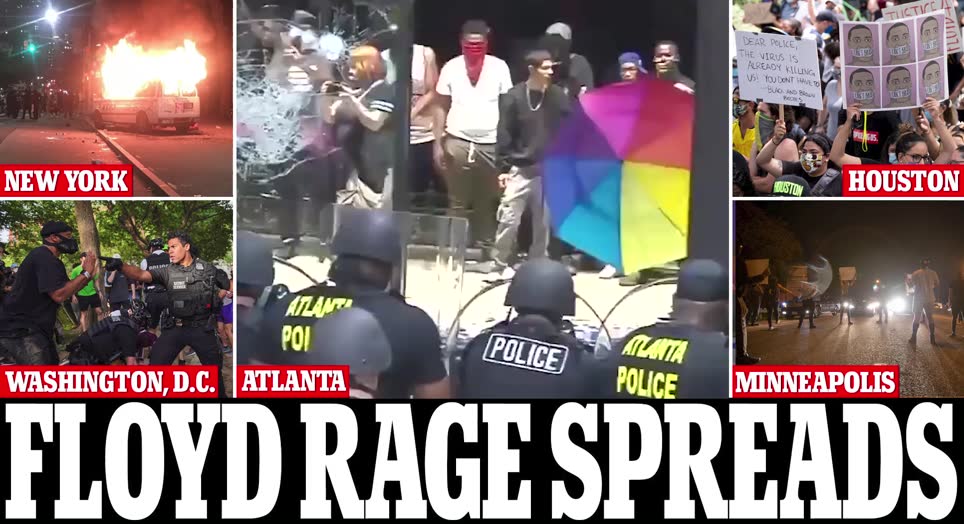
Exhilarating! The power of the people on display. Some love the unbridled energy, others feared it, and still, others used this time to wreak havoc on human bodies and property. A certain level of lawlessness is tolerated by society. Yet, when the line is crossed, steps are instituted to reign in the action to head off widespread, Pandora’s Box level chaos. Some people stole from stores. Some cops employed overly aggressive tactics in corralling peaceful demonstrations. It got ugly, the mayor of NYC imposed a curfew, and it had the desired effect. The streets were less chaotic but not completely free of violence.
We await the next chaotic, stressful moment as we continue our merry-go-round ride. The roaring sound of deafening silence that accompanies each new major event is not an accurate harbinger of a positive or a negative outcome. All we know is that “normal” morphs from day to day and that we must trust that this rollercoaster-type ride will end up in the perfect place. We must band together with old, new, and future acquaintances to ensure that our perfect place begins and their hateful place ends.
Something like scales that covered the eyes of white people for fifty years has fallen away, and they can see again. They see, feel, and are gaining an understanding of the battles against white supremacy that black folks have been waging for centuries. Yes, African Americans do receive inferior healthcare, poor education, limited employment opportunities, subpar housing options, uninspired economic support. Yes, too many cops view African Americans as the subhuman enemy that must be tamed and intimidated. The confluence of the pandemic, PAUSE, George Floyd, Breonna Taylor, Ahmaud Arbery, protests, aggressive cops, entitled dog walkers, blind police unions, ineffectual police brass all helped to tear the veil from the faux egalitarian country we were duped into believing existed.
Heard on the street:
“I’m sorry.”
“How did I not see this?”
“How did you deal with this…and still be sane?”
“White silence does equal consent.”
“How can we change this? What can I do?”
“I am embarrassed.”
More people have realized that black lives do matter and that we are all equal partners in this war against white supremacy. We did not need to be validated by white folks. It’s just good to have some new, enlightened allies.
There is a method FOR this madness we’re feeling. Protest. Boldness. Courage.
Do it NOW! The backlash is coming…
#PublicSchools #SchoolCulture #StudentCentered #StudentChoice #StudentEngagement #StudentLed #StudentVoice #blackpower #peacefulprotest #humanrights #police #endracism #resist #activism #blm #blacklivesmatter #georgefloyd #justiceforgeorgefloyd
////////////\\\\\\\\\\\\////////////\\\\\\\\\\\\////////////\\\\\\\\\\\\////////////\\\\\\\\\\\\////////////\\\\\\\\\\\\////////////
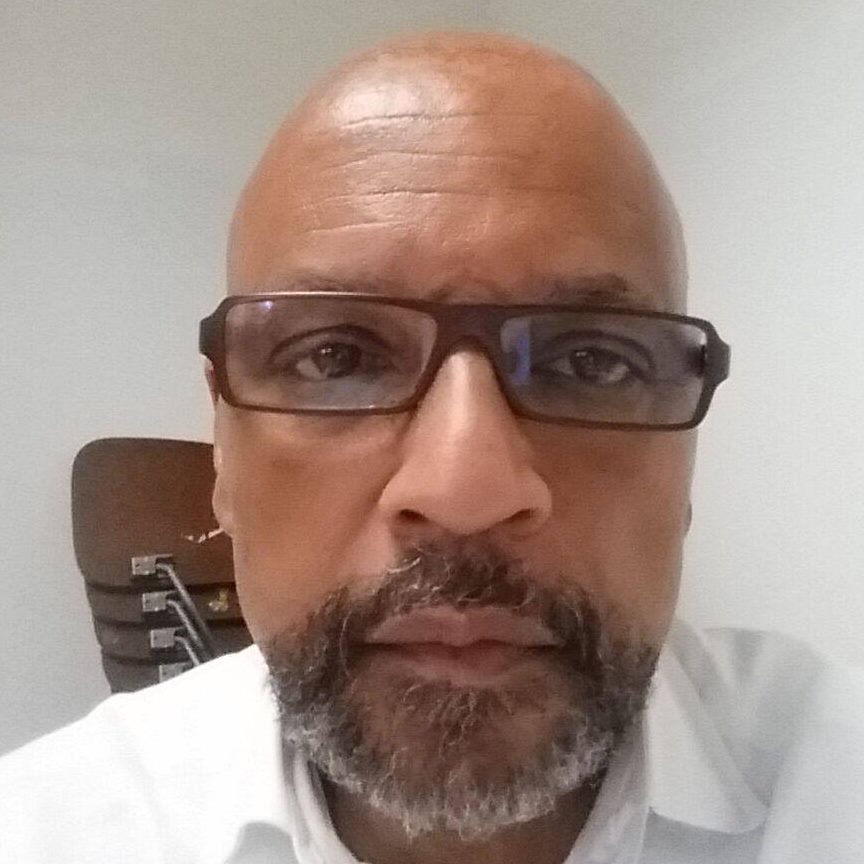
Carlyle Gerard Leach has spent time in business, education, and the non-profit sector. He lives in Brooklyn with his wife and two sons.

You hit a series of excellent points, my brother! Indeed, the confluence of factors, and then the taped callous disregard for human life – for someone paid by the people to ‘keep the peace.’. Despite lingering health fears, we couldn’t stay cocooned no more – but then yes, seeing the wave of white folks not dissipating the central issue but staying focused on OUR plight, our historic and continuing struggle, our pain — and their historic silence – has been powerful. And of course ‘big up’ to the sustained commitment and energy of OUR own – led by our youth! So yes, brother Carlyle, thanks for being out there – and for sharing this. More of us need to capture this historic moment, and ensure that the story is told for generations from our perspective, the voice of those who would remain silent and kept down no longer! Ashe! – Mitty
I felt all of this in my soul. I think the viciousness of that murderer, his cavalier attitude and savagery has brought people to the brink. Add the pandemic and it’s a powder keg. People like myself are just tired! I am tired of being hated for what I look like. I am tired of worrying for my son, my husband, my brothers, nephews, YOU, AND ALL OF MY MALE family and friends. It is exhausting. I pray that we don’t go through “cycle” and Mr. Floyd, Ms. Taylor and the countless others that we know or don’t know by name would have not died in vain.